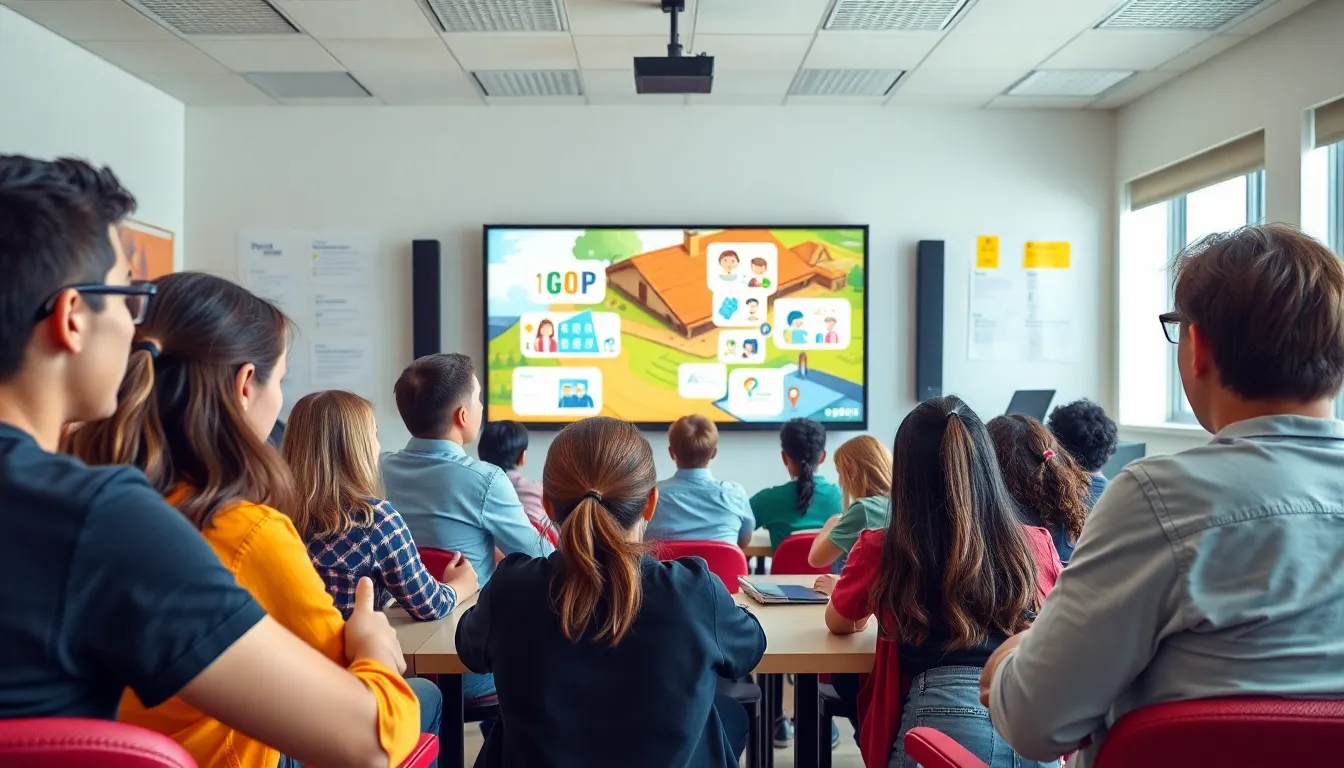In a world where attention spans are shorter than a goldfish’s, degree videos are the secret sauce for capturing interest. Imagine a dynamic blend of education and entertainment that transforms dry lectures into engaging visual feasts. These videos don’t just inform—they captivate, making complex concepts feel like a walk in the park, or at least a jog through a well-lit path.
Table of Contents
ToggleOverview of Degree Video
Degree videos capture attention effectively, especially in today’s fast-paced environment. These engaging visual experiences combine educational content with entertainment, making learning more interactive. Traditional lecture formats transform, providing viewers with dynamic alternatives for understanding complex topics.
Statistics reveal that viewers retain more information from video content than from written text. Studies indicate that learners are 80% more likely to remember what they see in video format. They find degree videos particularly useful for grasping difficult subjects, as visual aids enhance comprehension. Through animations, graphics, and relatable examples, these videos simplify intricate concepts.
In various fields, degree videos serve as valuable tools. For instance, students in STEM disciplines benefit from visual demonstrations of scientific principles. Similarly, degree videos in humanities allow for a deeper exploration of historical events and literary analyses. These formats cater to diverse learning styles and preferences, ultimately broadening accessibility.
Degree videos contribute positively to engagement metrics. Studies show that videos have a 50% higher engagement rate compared to standard educational materials. Through effective storytelling and relatable content, degree videos draw viewers in and maintain interest throughout the presentation.
Audiences interact with degree videos across multiple platforms. Platforms like YouTube, educational websites, and social media facilitate widespread dissemination. Such accessibility fosters a culture of lifelong learning, encouraging individuals to explore new topics and expand their knowledge base.
Degree videos reshape the educational landscape, offering fresh perspectives and innovative approaches to learning. Their impact resonates across academic institutions and informal learning environments alike, merging education with entertainment seamlessly.
Key Features of Degree Video


Degree videos possess distinctive features that enhance learning experiences and engagement. They cater to modern educational needs, providing a dynamic platform for both instructors and learners.
User Interface
User interfaces in degree videos focus on user-friendliness. They integrate intuitive navigation systems, allowing viewers to access content with ease. Menu options facilitate quick location of specific topics. Learners enjoy functionality like playback speed control and interactive quizzes. Features like these cater to varied learning preferences, boosting retention rates. Engaging layouts enhance interaction, providing real-time feedback for users during assessments.
Video Quality
Video quality significantly impacts viewer experience. High-definition visuals combined with clear audio create immersive learning environments. Degree videos utilize advanced production techniques, ensuring crisp graphics and animations capture attention. Research shows that 76% of learners engage more deeply with high-quality video content. Additionally, optimized streaming reduces buffering times, maintaining uninterrupted learning. Effective use of visuals complements spoken content, making complex subjects easier to grasp.
Benefits of Using Degree Video
Degree videos offer several advantages in modern education and professional settings, enhancing engagement and information retention.
Educational Use
Engagement in education increases significantly with degree videos. Learners grasp complex subjects more easily through visuals and narratives. Statistics show that 80% of viewers remember video content better than text alone. Interaction through elements like quizzes encourages active participation. Educational institutions benefit from improved retention and understanding. Visual aids foster a deeper exploration of concepts across subjects, including STEM and humanities. Students enjoy the flexibility of accessing content anytime and anywhere, enabling personalized learning.
Professional Applications
Professionals utilize degree videos to enhance training and onboarding processes. Visual content demonstrates procedures effectively, making instruction clearer. Organizations experience higher retention rates in training materials, as learners absorb information better through video. Increased engagement in corporate settings leads to improved productivity. Teams can share knowledge across departments, breaking down barriers in communication. Additionally, degree videos support skill development and continuous learning in various industries. They tailor content to meet specific organizational needs, ensuring relevance and practicality.
Potential Drawbacks
Despite their advantages, degree videos present certain challenges. Technical difficulties may arise, affecting the viewing experience. Slow internet connections can lead to buffering, which disrupts learning. Users may find it frustrating when videos do not play seamlessly or have inconsistent quality.
In addition, excessive reliance on visuals could hinder deeper understanding. While videos engage viewers, they might oversimplify complex topics. Some learners may still prefer traditional methods, such as reading texts, to gain comprehensive insights. The unique emphasis on flashy graphics or animations might distract from the core message, leading to confusion.
Creation of high-quality degree videos often demands significant resources. Time and financial investment for producing professional content might not be feasible for all educators. Many institutions may struggle to find the right balance between quality and cost. Consequently, some educational programs may offer subpar content that fails to capture student interest.
Another consideration involves accessibility. Not all learners have equal access to the necessary technology. Students from disadvantaged backgrounds may struggle to engage with degree videos due to lack of devices or reliable internet. This inequity can widen existing gaps in educational opportunities.
Lastly, engagement metrics may not always translate to effective learning. High engagement rates do not necessarily correlate with increased retention of information. Viewers might enjoy videos without fully grasping their content. Understanding these limitations helps in making informed decisions about incorporating degree videos into learning environments.

